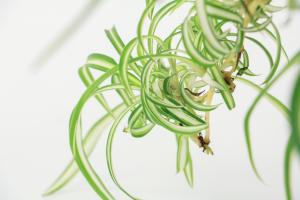How to Get Rid of Ants from Plant Pots
Ants are tiny creatures that can easily sneak into potted plants and begin to wreak havoc. They can cause damage to the plant roots, soil and may even bite human hands if disturbed or threatened. In this article, we'll discuss some effective and eco-friendly ways to get rid of ants from plant pots.
Identify the Ant Species
The first step to controlling ants in plant pots is to correctly identify the species of ant invading the pot. There are different types of ants, with different habits and preferences, and the method used to control one species may not work for another. For instance, some species prefer sweet food, while others prefer proteins or fats. Once you identify the species of ant in your plant pot, it will be easier to choose the right method to eliminate them.
Use Natural Repellents
If you're environmentally conscious, you may want to avoid using chemicals to control ants. In such cases, natural repellents are the safest and most eco-friendly option. Some natural repellents that work well include:
Peppermint oil: ants dislike the scent of peppermint, so a few drops of the oil strategically placed around the pot can keep the ants at bay.
Borax and sugar: mix equal parts of borax and sugar, put the mixture on a lid, and place it near the plant pot. The sugar attracts the ants, and the borax acts as a toxin that kills them.
Vinegar: a simple solution of equal parts of vinegar and water can also repel ants when sprayed on the plant pot or the ant trail.
Use Sticky Traps
Sticky traps are another effective method to control ants in plant pots. These traps are coated with a sticky substance that traps the ants and prevents them from moving around. You can buy ready-made sticky traps from the store or create your own using tape or petroleum jelly. Place the traps around the plant pot, and the ants will eventually get stuck, preventing them from causing any further damage.
Use Food Grade Diatomaceous Earth
Food grade diatomaceous earth (DE) is a natural insecticide that is effective against a variety of pests, including ants. DE is made from the fossilized remains of tiny aquatic organisms called diatoms and works by dehydrating the insects that come into contact with it. It is safe to use around plants, pets, and humans, making it an eco-friendly and non-toxic option for controlling ants in plant pots.
Conclusion
Controlling ants in plant pots requires patience and persistence. You may need to try different methods before finding the one that works best for your situation. However, with the right approach, you can effectively rid your plant pots of ants and protect your plants from further damage.

 how many times do yo...
how many times do yo... how many planted tre...
how many planted tre... how many pine trees ...
how many pine trees ... how many pecan trees...
how many pecan trees... how many plants comp...
how many plants comp... how many plants can ...
how many plants can ... how many plants and ...
how many plants and ... how many pepper plan...
how many pepper plan...
































